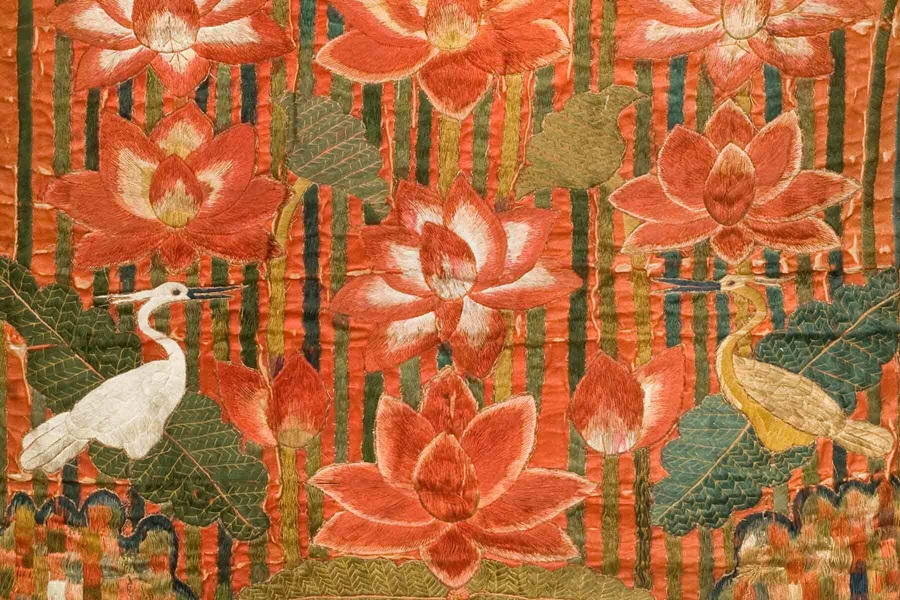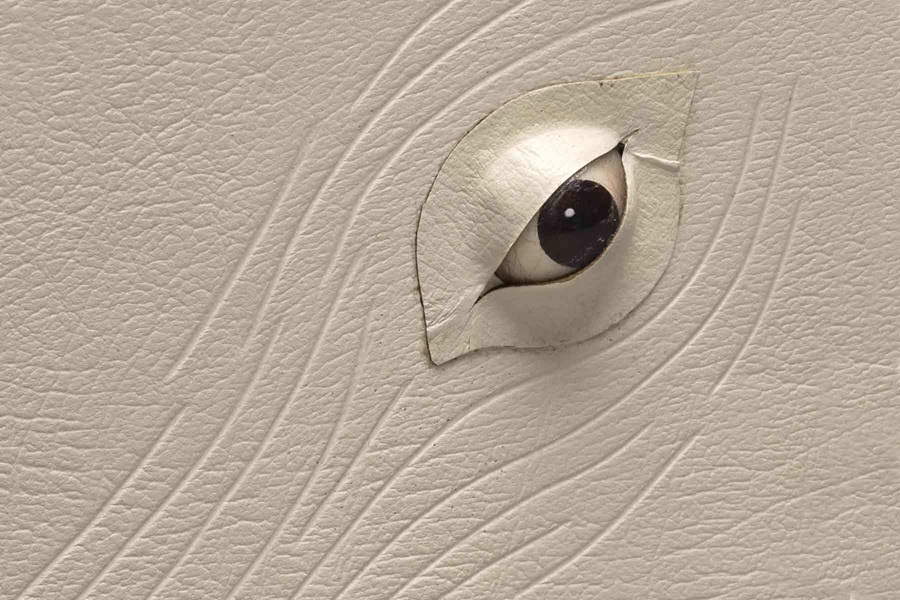THREE NOT TO BE MISSED EXHIBITS
Korean Art

Opens May 17, 2025
Explore one of the nation’s earliest and most historically significant museum collections of Korean art and culture.
From the late Joseon dynasty (1392–1910) to today, PEM’s exceptional collection explores art, culture, and life in Korea during a time of significant transition and global connection.
PEM’s early Korean collection was primarily formed by Edward Sylvester Morse, director of the Peabody Academy of Science (a predecessor organization to PEM), who proactively pursued Korean acquisitions during his tenure from 1880 to 1914. Among his most significant acquisitions from this period is a set of eight Korean musical instruments played at the 1893 World’s Columbian Exposition.
PEM’s connection with Korea was also strengthened by Yu Kil-Chun (1856-1914), the reformist scholar and politician who came to the U.S. as a member of the first Korean delegation and lived near Salem for nearly two years. Yu Kil-Chun and other early travelers between the U.S. and Korea donated many meaningful and foundational works to the museum’s collection.
PEM’s Yu Kil-Chun Gallery of Korean Art and Culture brings to life the compelling stories of these early pioneers, presented alongside the museum’s renowned Korean textile collection, exquisite 19th-century paintings — including the Welcoming Banquet of the Governor of Pyeongan screen — and inspiring contemporary works by Nam June Paik (1932–2006) and other Korean and Korean American artists.
Follow along on social media using #PEMKoreanArt
The Yu Kil-Chun Gallery of Korean Art and Culture has been made possible with the support of the Korea Foundation. Generous leadership support is provided by the National Museum of Korea; Samsung Foundation of Culture, Korea; the E. Rhodes and Leona B. Carpenter Foundation; the Overseas Korean Cultural Heritage Foundation; the Henry Luce Foundation; Helen H. Kim and Colin A. Warwick; Maria Kim and Sung-Dae Hong; the Council of Korean Americans, Boston; the Korean American community of New England; the Korean Cultural Center, Washington, D.C.; the Korean American Citizens League of New England; the Korean Cultural Society of Boston; an anonymous donor; Linda Champion; Mrs. Yu Suk Hee; and other generous donors.
ABOVE IMAGE: Artist in Korea, Bandaji (front-dropping chest), early 1900s. Zelkovas tree and brass. Gift of Cynthia M. Nadai, in memory and honor of Edwin Morgan. 2023.29.2. Peabody Essex Museum. Artist in Korea, Welcoming Banquet of the Governor of Pyeongan (detail), early 1800s. Ink and color on silk. Museum purchase, made possible in part by W.C. Endicott and George A. Peabody, 1927. E20262.A-H. Peabody Essex Museum. Artist in Korea, cotton armor with talismans (detail), 1800s. Cotton, hemp, copper alloy, and iron. Gift of the United States Naval Academy, 1923. E18987. Peabody Essex Museum. Photo courtesy of Overseas Korean Cultural Heritage Foundation. Artist in Korea, Janggu, before 1893. Leather, wood and silk. Gift of Joseon delegation to the World’s Columbian Exposition, 1893. E9804. Peabody Essex Museum. Artist in Korea, sword and sheath, before 1899. Wood, lacquer, iron, and silk. Gift of Dr. Charles Goddard Weld, 1889. E9739. Peabody Essex Museum. Photo courtesy of the Overseas Korean Cultural Heritage Foundation. Artists in Korea, Hwarot (bridal robe), 1700s or 1800s. Silk, paper, and cotton. Gift of Yamanaka and Company, 1927. E20190.F. Peabody Essex Museum. Photo courtesy of the Overseas Korean Cultural Heritage Foundation
Susan Philipsz: If I With You Would Go

On view through August 3, 2025
Philipsz uses sound, song, and site to heighten awareness of space, emotion, and memory.
In the sound work If I With You Would Go, artist Susan Philipsz sings eight different versions of the traditional ballad “James Harris,” also called “The Daemon Lover.” It tells the story of a married woman seduced by a long-lost lover, who is secretly the devil in human form. With promises of adventures and treasure, he lures her onto his ship, only to scuttle it with his cloven hoof, drowning and sending her to hell.
Philipsz uses sound, song, and site to heighten awareness of space, emotion, and memory. Her choice of song, that of a young woman lured away to sea, might be understood as a mythical and cautionary echo of the mercantile and maritime history embodied in PEM’s historic East India Marine Hall. Shaping sound like a sculptor, the artist used recordings of her unaccompanied singing voice to define and articulate the space.
Share your impressions with us on social media using #PEMpresenttense and #Susan Philipsz.
Support provided by donors to the 2011 FreePort Fund and by the East India Marine Associates of the Peabody Essex Museum. Susan Philipsz, If I With You Would Go, 2011. Eight-channel sound installation, 19:17 minutes Commissioned by PEM, 2011. Museum purchase made possible by the John Robinson Fund, 2012.29.1.
Draw Me Ishmael: The Book Arts of Moby Dick

On view through March 29, 2026
Herman Melville’s Moby Dick is the most persistently pictured of all American novels.
The novel and its timeless themes continue to inspire artists, designers and creatives of all types. Its first sentence: “Call me Ishmael.” is one of the most iconic and best-known opening lines in all of literature.
Draw Me Ishmael: The Book Arts of Moby Dick is the first exhibition focused on the book arts of the hundreds of editions published since 1851: the illustrations, binding designs, typography and even the physical structures. Drawn almost entirely from the Phillips Library collection, this intimate gallery space in the James Duncan Phillips Trust gallery explores decades of creative approaches to interpreting the novel visually in book form.
It will shed some light on Melville’s original inspiration and include a contemporary update through recent artists’ books, graphic novels, a translation into emoji and pop-up books. Think untraditionally and independently about Moby Dick, appreciate the variety of approaches to visualizing the novel and explore copies of more than 50 books on display.
Follow along on social media using #DrawMeIshmael
Draw Me Ishmael: The Book Arts of Moby Dick is organized by the Peabody Essex Museum. This exhibition is made possible by Carolyn and Peter S. Lynch and The Lynch Foundation. We thank Jennifer and Andrew Borggaard, James B. and Mary Lou Hawkes, Chip and Susan Robie, and Timothy T. Hilton as supporters of the Exhibition Innovation Fund. We also recognize the generosity of the East India Marine Associates of the Peabody Essex Museum.
Time to explore: Intimate gallery. Plan for 20 minutes.
TOP IMAGE Chaim Ebanks, bookbinder, and Susan Ebanks, designer, of Exeter Bookbinders (Devon, England), Moby Dick; or, The Whale (detail), published 1930. Custom binding in white Chieftain Goatskin leather with blind tooling, gilt lettering and glass prosthetic eye, 2023. Phillips Library purchase, Library Acquisition Fund, made possible by Arthur and Judi Rubin, 2023. PS2384.M6 E23 1930. Courtesy of Phillips Library, Peabody Essex Museum, Rowley, MA. Photo by Kathy Tarantola/PEM
